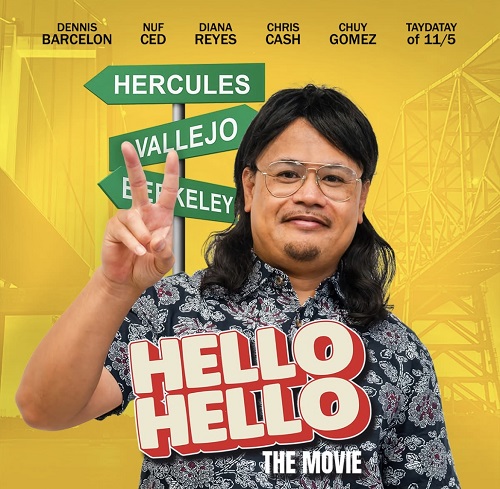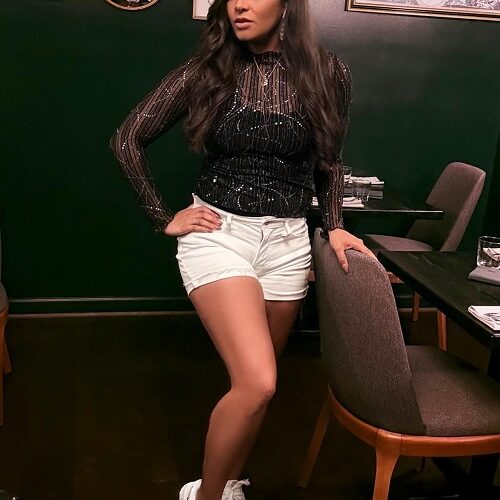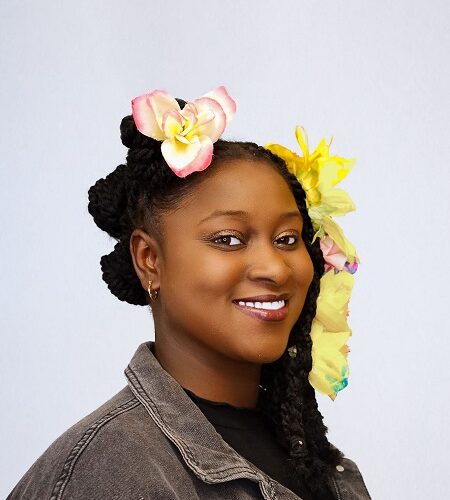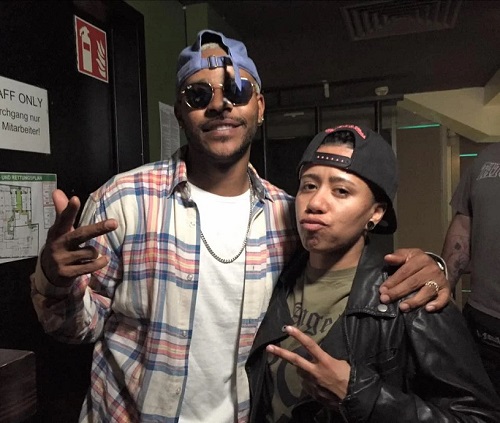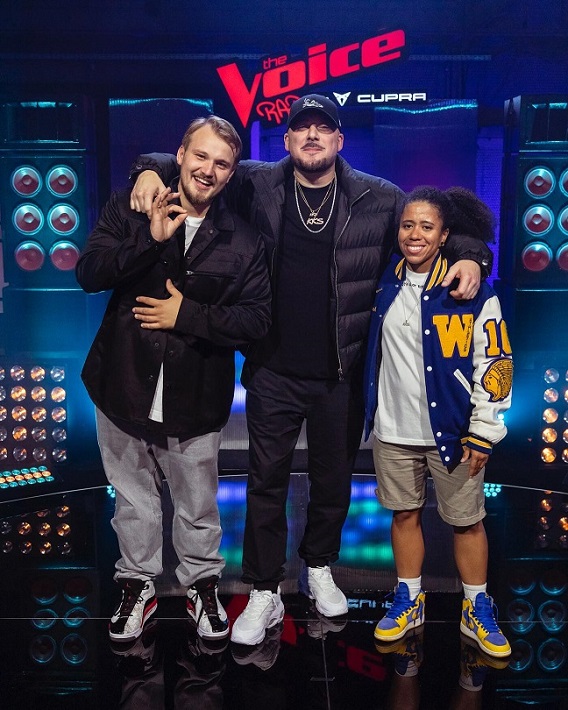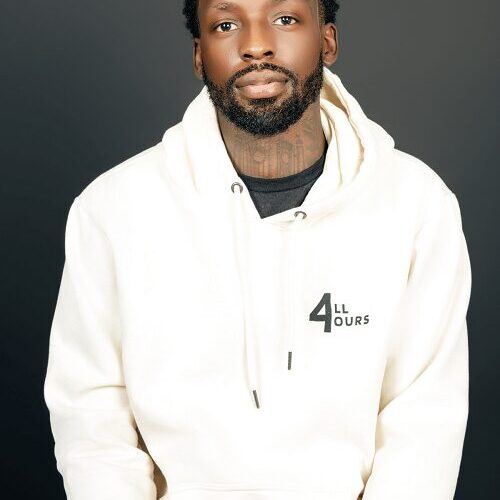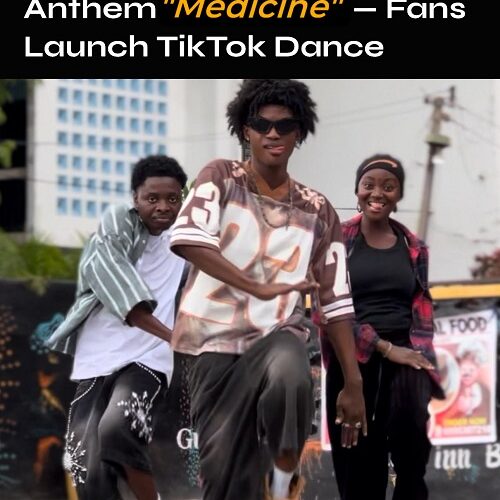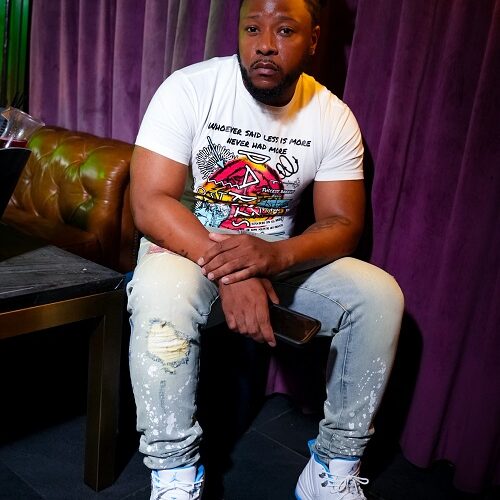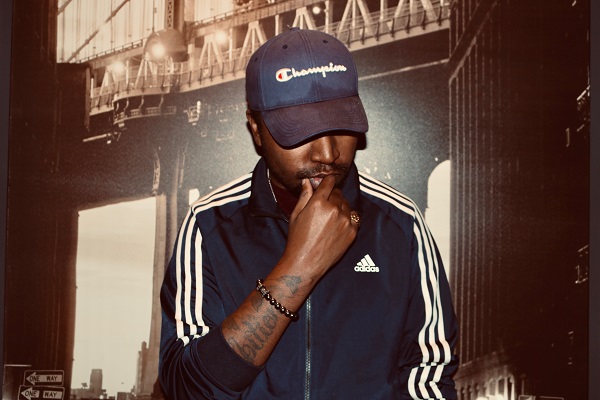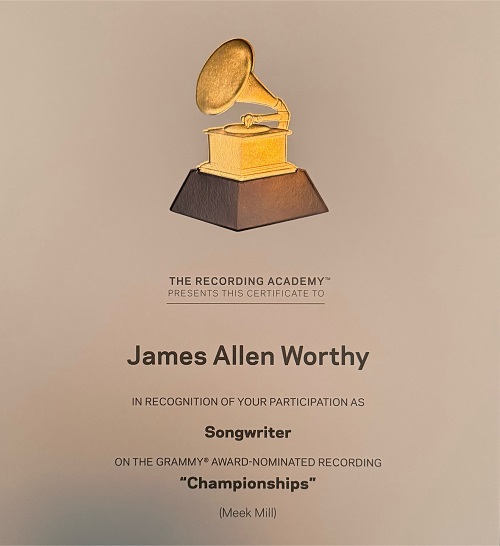Mississippi has always had a reputation for destroying its Black children before they can even grow into their full voice. From Emmett Till at fourteen, lynched over a lie, to the countless false arrests, false imprisonments, and false narratives forced onto Black youth across the South, the pattern has been clear: criminalize, silence, and bury the truth before it can ever be spoken. Shannon Leeann Dill, now popularly known as DaphoDILL, was born into that pattern in 1994, a Black gay child, in a state, that had already written her story, before she could even speak for herself. They knew before she did — and they planned her downfall with calculation and precision.
From the time Shannon Dill was nine, she became the target of white teachers, whose obsession with her, changed the entire course of her life. They knew Shannon Dill was a black and gay child, and very intelligent; instead, many white educators, sought to criticize, torment, and insult Shannon’s intelligence, by even reenacting, numerous times, Shannon’s life, as a gay black child, in a private school, then entering into public school, with extreme racist and homophobic policies and structures. Many of these white adult educators, would come and stare at Shannon’s clothes, smell her fragrance when she would be at school, looking at her body, and nails and toes, walking up and around her, like they had a serious problem, because she was a gay student. Many of these white educators, mocking Shannon, because she came there with intelligence, to be put in classes above other students; although, held back in school. Shannon being a bright, young, black, gay child, seemingly to graduate school early, while the educators mocked her intellect, for their own sick amusement, of a child, they were teaching. So, how sick can you be, to attack a child for no reason, just because you don’t like that they are smart, black, or gay? So, how evil can you be, to be teaching children, and targeting them, because of their intelligence and sexuality, while pitting their own adult minds, against a child’s abilities.
Countless and relentless white teachers, targeted Shannon. One teacher saw Shannon in the 5th grade, at 9 years-old, and immediately, started messing with Shannon Dill’s talents. Many accounts to where this teacher, Connie Showes, at the time, was targeting Shannon, because she did not like gay people; although, Shannon wasn’t a grown person, she was a child. What was worse, is that Connie Showes, interfered with Shannon’s education and learning abilities, where Shannon’s parents had to come to the school, on accounts, because the teacher, would not give up her hatred, and didn’t want a gay, black child in her class, that was already smart, and above the lessons being taught. This setting Shannon Dill back in her education, even more. What was even more sinister, was what was to come next for Shannon Dill.
One woman that stood to destroy Shannon Dill’s very existence, was a schoolteacher, and a member of a white-supremacy church, named Pam Harless. A woman that saw Shannon, and immediately, saw her as if she was, a black slave to her. Given Mississippi’s history of racism and homophobia, it isn’t surprising, that a white woman, would target a black child. This time it wasn’t Emmett Till, it was Shannon Dill, a black, gay child, that grew into a woman, that Pam Harless, was relentless at destroying. Pam Harless was a predator, hiding behind the walls of a Mississippi church and a schoolhouse. She saw Shannon for what she was — Black, gay, and smart — and decided that was something she hated. Her mission was clear: break Shannon, confuse her, erase her memory, and set her up, to carry her sickness, while she hid in plain sight. Many other students and white staff, knowing what was being used on Shannon Dill as child and minor, and still, letting the woman, do whatever she wanted to do, to Shannon. This where Shannon, never had any rights, because the woman, decided to take everything she could, away from her, because she was everything she hated, and someone she wish, she could have been — naturally intelligent, gifted, talented, intuitive, as a child.
Shannon entered middle school, at 11 years-old, when her life took a turn for the worse. This wasn’t causal bullying, it was targeting a student. Targeting of hair, clothes, nails, shoes, sexuality, intelligence, and overall appearance, because many themselves, couldn’t see, just how oppressed they were, while Shannon, saw every spectacle, that she was enduring, even without full comprehension. Many teachers inflicting the burden, couldn’t see even answer questions, Shannon would ask them. Questions after intentional discrimination. Shannon asked one of her teachers, Amanda Saintmeyer, that aimed her guns at Shannon — Do you have a problem with me? The teacher just looking and walking away, after numerous interactions involving discrimination, the woman would inflict. Amanda constantly watching and looking at what Shannon would wear, and how she would dress, in utter disgust, for a grown teacher to target a child, and put their sickness to work. Not because anything was wrong with Shannon, but because of their own hatred for not only black students, but LGBTQIA+ ones. Even the use of surveillance in her home, many of the educators used on Shannon, invading her personal space, privacy, and life, and simulating their disgusting behavior toward her.
Between ages 11-12, Shannon, started filing reports with the FBI (federal bureau of investigation), on the teachers and school house, when just a minor and kid. The use of technology being used by the teachers, even tampered with her abilities to report abuse, harassment, discrimination, and even assault, to the police, and manipulated her thoughts, as a child, Shannon nor even being able to tell, whether or not, where their voice ended and hers began. A direct attack on a child, not only in the schoolhouse, but in her home life — they just couldn’t help themselves, but to torture a black gay child, in the state of Mississippi.
That was Mississippi’s structure at work: use the schools, use the churches, use the courts, interfere with home life, use the school to prison pipeline — and always protect the abuser while punishing the black child. This wasn’t just about Shannon as one girl in a schoolhouse. This was about a system that thrives on control, a system that criminalizes Black children for being smart, isolates them for being gay, and weaponizes every institution — from teachers to therapists to courts to military commanders — to ensure that the truth never sees daylight. What happened to Shannon Dill, is proof that Mississippi’s racist and homophobic roots are not relics of the past. They are living, breathing forces, carried forward by people, like those women, who made it their life’s mission to destroy Shannon’s.
Shannon attempting for months to reach out to the FBI, and being stalled and interfered with, so that white educators could get an amusement out of it — inciting violence, controversies, and hate — “Thought You Were So Smart” __ the constant threatening of Shannon, as an 11 year old, in a schoolhouse, because she knew this teachers were racist and homophobic, before her mind could even fathom it. Teachers constantly using the technology, to wipe her memories, their names, and behavior, out of Shannon’s mind, using the surveillance, knowing Shannon was on the FBI website, at a very young age, reporting, and being deterred off track, for standing up for herself. The teachers even interfering with Shannon’s knowledge, to get her to report for racial and homophobic white kids, steering Shannon’s voice away from true rights, and sticking her back into the cycle of oppression. Minimizing Shannon’s reports and voice, to interfere with her reporting to police officers, about the racist and homophobic things, going on in the schoolhouse. For any adult to defer any child or minor away from reporting abuse to the police; especially, if it were their child, is last hateful, and to interfere with other a child reporting on racism, to help a white student out, is even far more devastating and disgusting, knowing Shannon, was the target of an entire hate campaign, engineered and orchestrated, by white educators. What’s even worse, Shannon tried leaning on the only black educator she saw teaching at the school, but he too, was complicit in the bullying and abuse, toward a black gay child. This black educator was named, Larry Darty. What is even worse, Shannon saw a new black woman, that became a teacher their, and as soon as Shannon spoke to the woman, she immediately, didn’t like her; furthering the trauma and abuse, from not only a white dominated facility, but black educators following suit, in targeting a black child, as they themselves, were children, of the same oppressed system. Many of the black educators, loving on black students, but when it came to Shannon, she was isolated even more. Many of these teachers, saw Shannon, and made Shannon “the problem”, to their own sick behavior.
These educators, watched, monitored, stalked, ignored, harassed, intimidated, discriminated against Shannon, with no remorse, for their sick ways. Shannon even joining the soccer team, a skill Shannon had naturally as a child, without even needing to be taught. Shannon encountering one or the schoolteachers, after hours, during games, as she had no bearing, on how much she just couldn’t stand Shannon, or black people. Shannon was on an all white soccer team, being the only black student to participate, was isolated even more, causing her to “quit” the team because of blatant racism, from a white schoolteacher, named Laquita Smith. Shannon encountered this woman during a soccer game, where only seniors could play, and everyone else had to wait to get into the game. The woman, Smith, asked two white girls, that Shannon was “some-what” cool with, in the school house, were they sisters. Shannon laughing, because Shannon could see they looked nothing alike, the teacher being offended, by a 13 year old, when she was in her 30’s, saying to Shannon, “what’s so funny”, and Shannon just looking and walking away, and “Smith”, yelling out as Shannon walked away, saying, “It’s not funny, what would be funny, is if I said they looked like you”, Shannon being the only black child in the midst. Smith even going further, when Shannon was put in the game, and a foul was called, that Shannon didn’t cause, saying to her, “see you want me to put you in the game, and look at that”, another coach named “Taco”, came to Shannon and told her, “Don’t listen to her, that was not your fault”, “Smith” a soft-ball coach, standing in for the soccer team, knowing nothing about soccer, staying how she felt about, thus causing Shannon, to not want to be on the soccer team anymore. Shannon’s dismay can even further, when Pam Harless, decided because when Shannon was 7-9 years old, on a recreational soccer team, with mainly white girls, she was going to use the technology on Shannon, to take her soccer skills away from her. Mimicking when Shannon was 7-9 years old, the coach would tell Shannon, to pass the ball the other white teammates, and Shannon did, but Shannon was their star player and scorer for the team. Pam Harless, using surveillance on Shannon, wanting to inflict white supremacy against Shannon, that since Shannon barely passed the ball at that age, she was going to teach Shannon a lesson, and interfere with Shannon’s natural talents, to let white children, she played soccer with get ahead of her, when Shannon had been ahead of them for years — academically, musically, athletically, and even otherwise talents Shannon had, Pam Harless, just couldn’t stand to see. Pam Harless even knows how educated Shannon was, coming from a private school, and decided she was going to fix that, and make Shannon less than. Shannon a black and gay child, that was literally, supposed to graduate, 2 years ahead of class. Shannon when joined the soccer team later, with a different coach, could even see her talents, being interfered with, to where it started to bother Shannon, because it just bothered Pam Harless, so much, to see Shannon, a child she was a teacher to, succeed, pass other kids, overall. What’s worse, Pam Harless, used the technology externally, to externally interfere with Shannon entire life, and even experiment on her, as a student in a schoolhouse, as if she owned, a black gay child, with her sickness and her evil attitude and behavior. Pam Harless, acted like she was Shannon’s parent, and decided Shannon just needed to be punished at every turn, and at all cost. This showing, just how deeply sick, Mississippi was and still is, as they let those teachers around black and gay children, knowing the cost those kids would have to pay, being in hostile environments, with educators, that didn’t like black people, gay people, and tortured smart ones, based on their own disgruntled, sick, disgruntled behavior. Like Shannon was a plague, and she just couldn’t exist.
This carried on into Shannon Dill’s adult life. Shannon never had “free will”, to where Pam Harless, used Shannon like a puppet and a muse, for her own sickness, starting her hatred for Shannon, like Shannon needed to be seen as worse than human. Pam Harless even going as far as, extreme homophobia, when Shannon would have to bath children that were female. Pam Harless, playing with Shannon’s natural mothering skills and intelligence, to inflict harm on Shannon and other children. Pam Harless wanting Shannon to be seen as sick herself, not just because Shannon was gay, but she wanted Shannon to be a “predator” to anything walking; especially, to women. Pam Harless setting up events in Shannon’s life, because she could stand the fact Shannon was gay and proud of her sexuality, not hiding it, not even knowing the full extent, of how bad homophobia was in the state of Mississippi; but often times, experiencing it, in her life. Shannon encountering bathing young girls in her home life, and being interfered with, where her body started feeling weird, and intrusive thoughts starting becoming reality for Shannon, from the woman’s own sick mind. Shannon becoming uncomfortable bathing children, changing their diapers, even care-giving, because Pam Harless, just couldn’t stand seeing, a gay child, bath someone of the same sex as her. Often time Shannon, being disturbed, and never wanting to be anywhere near children; especially, without someone near her, because many older adults, thought us was amusing, to see a black gay child struggle, with not just sexuality, not just race, nor just with children, but in her own skin and body, letting Shannon know, they felt she didn’t need to be around children, based off of her sexuality, as Pam Harless carried her sickness into Shannon’s life. Pam Harless, a predator, to Gay and black children, was more than a danger to Shannon, but even a danger to those Shannon was around.
What’s worse is that when Shannon has to look back at that schoolhouse — the very place where she was assaulted, groomed, engineered, silenced, and pushed into shame — She has to see the same people still working there, or living comfortable retirements like nothing ever happened. Some of them walk the halls every day, teaching new generations of kids, while others collect pensions and live out their years with no accountability. But for Shannon, that schoolhouse is not just a building. It’s the site of trauma that never left her body. It is where her memory was tampered with, where her voice was stolen, and where her childhood was twisted, into something it was never meant to be.
Every brick of that schoolhouse holds a piece of the truth: a white teacher who groomed and assaulted her, an ex-army teacher who tried to control her, like she was one of his soldiers, and a system of administrators and staff, who either looked away or condoned it. They did not just fail her. They targeted her. They knew she was Black, they knew she was gay, and they decided that made her dangerous, even as a child. So, instead of helping her, they orchestrated a narrative to criminalize her, before she was even grown.
And here is the sickest part: while they continue their lives with titles, salaries, and retirement checks, Shannon is left with the trauma. She is left with the nightmares, and shame for never having “free will” or any rights, and being made to carry guilt that was never hers. She is left with the memory of trying to report to the FBI at eleven, only to be blocked, delayed, and manipulated: steering her into age 12 for reporting — just old enough, in their eyes, to be punished instead of protected. That schoolhouse is a wound that never healed, because the people who inflicted it, were never held accountable.
Seeing how these teachers carry themselves today, is far worse, than anyone could imagine. They look calm, pleasant, even respected in their communities. They smile in church pews, shop at grocery stores, and post family pictures, like they’ve lived good, honest lives. Some have retired comfortably, some are still teaching, molding young minds as if they didn’t destroy Shannon Dill’s life. To the outside world, they look harmless. But the truth is: behind their calm appearances; is the violence they carried out against Shannon Dill, and other Black children.
This is what systemic abuse looks like in Mississippi. The abusers get to grow old in peace. The survivors are left to piece together fractured memories, to fight for justice decades later, and to carry the burden of crimes they never chose. Their calm is built on black children’s pain. Their pleasant lives are funded by their silence. And the only way to break that balance is to tell the truth, even if it shakes the very foundations of their false respectability.
On the Perry Central High-school’s Facebook page, a teacher Shannon Dill had, named Glenda Hatfield, that actively consigned the abuse, proudly posted a motivational message: “Where you come from and what you have done doesn’t determine your future; where you are going and who you want to become shape your future! Work hard and never give up on your dreams.” A direct contradiction, to what Shannon Dill, has to experience in those halls, even as she was never even able to, act on her own, but controlled in their environment, for these educators, own amusement.
To most people, those words probably sounded inspiring. But to Shannon, they are a slap in the face. Because the same teacher who smiles and posted those words publicly, was part of a system that destroyed her childhood. She had no problem with any teacher, in the schoolhouse, “shaping Shannon’s future.” When it meant steering Shannon into abuse, controlling her thoughts, and watching as another teachers, orchestrated her trauma. She knew what was happening and participated in it, all while putting on the mask of encouragement.
That is Mississippi’s sickness in one snapshot: abusive teachers and staff branding themselves as mentors, while in reality, they were predators or enablers. Inciting to students to “never give up on their dreams”, while actively working to make sure many, never had a fair chance to dream. Telling students the future was in their hands, while they erased memories, silenced reports, and sabotaged them from the inside out. Their words may live on a school website, but reality, will live forever in Shannon’s, and other students scars.


